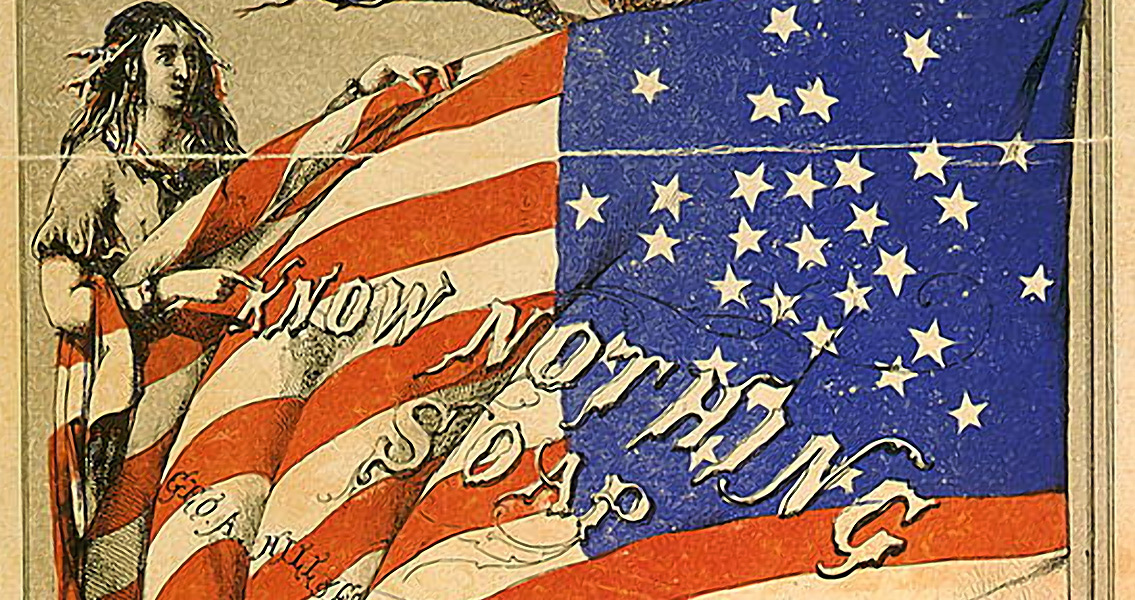<![CDATA[Highlighting just how long standing concern over immigration is as a political issue, the 18th February marks 160 years since the American Party convened to nominate its first presidential candidate. At a time when discussions over immigration dominate the US electoral caucuses, and political debate in Europe is shaped by the flow of migration into the continent, the anniversary is particularly revealing of the political background to these issues. Put simply, immigration was the American Party's chief concern. It was made of Americans who over the previous decades had become increasingly fearful that a massive wave of immigration to the USA was starting to change the country's identity. The party developed the nickname 'The Know Nothing Party' as a consequence of its origins in secretive nativist societies in the early 1850s whose members denied all knowledge of the movement's existence. The 18th February, 1856, meeting of the party in Philadelphia saw Millard Fillmore of New York nominated as its presidential candidate, with Andrew Donelson of Tennessee chosen as his running mate. Significantly, the party had completely ditched the secretive element of its existence, making clear its position as a serious political party. Anti-immigrant sentiment had started to become prevalent in the United States during the 1840s. On the west coast, a huge influx of immigrants from China and Japan had made their way to the United States in search of work. On the east coast, massive waves had started arriving from Europe, particularly Ireland, Italy and Germany. This diverse influx of immigrants began to draw resentment from those born in the United States. Conflicts occurred in US cities several times in the first half of the nineteenth century, highlighting a growing tension between those whose parents and grandparents had immigrated to the US, and the more recent arrivals. In July 1844, riots broke out in Philadelphia, with nativists battling Irish immigrants. Twenty people were killed, with several Catholic schools and churches being burned down. A nativist movement, the origin of the American Party, started to form around the United States in the later part of the 1840s. It took two main forms: several small political parties, such as the Nativist Party, which were explicitly anti-immigration, and secretive societies which sprung up in East Coast cities, such as the Order of Americans and the Order of the Star-Spangled Banner. These secretive organisations, whose leaders remained mysterious, endeavoured to keep immigrants out of the USA, and prevent those already in from gaining positions of power and influence. Along with the common fears of increased labour competition and foreign cultures that drive anti-immigration movements, Irish and Italian immigrants were targeted in particular due to their origins in Catholic countries. Continuing an idea which had been present in Europe since the Reformation, it was argued that Catholics' loyalty would be to the Pope, rather than any government. Over the years these seemingly disparate nativist groups grew in popularity, and by 1854 managed to shock the political establishment. A disgruntled faction of Whig politicians sided with the 'Know-Nothings', and ran for office in several US states. The scale of the American Party's rapid ascent is shocking, by 1855 its supporters had elected 43 candidates to the House of Representatives and five senators, alongside thousands of government officials. By 1856 they were ready to consider a run for the presidency. Ultimately the issue that divided the United States in this period, slavery, also divided the American Party, leading to its collapse. Many anti-slavery members of the party defected to the Republican party, and in the subsequent election Fillmore only succeeded in capturing the state of Maryland. Just as soon as it had arisen the party entered a sharp decline, virtually disappearing by 1860. The onset of the US Civil War revealed that concern over slavery was a far more divisive issue than immigration. ]]>
US Anti-Immigration Party Nominates Presidential Candidate
